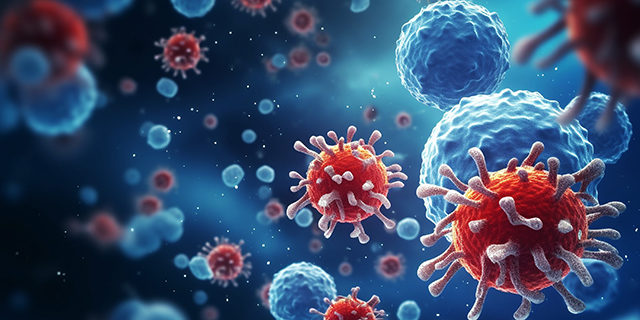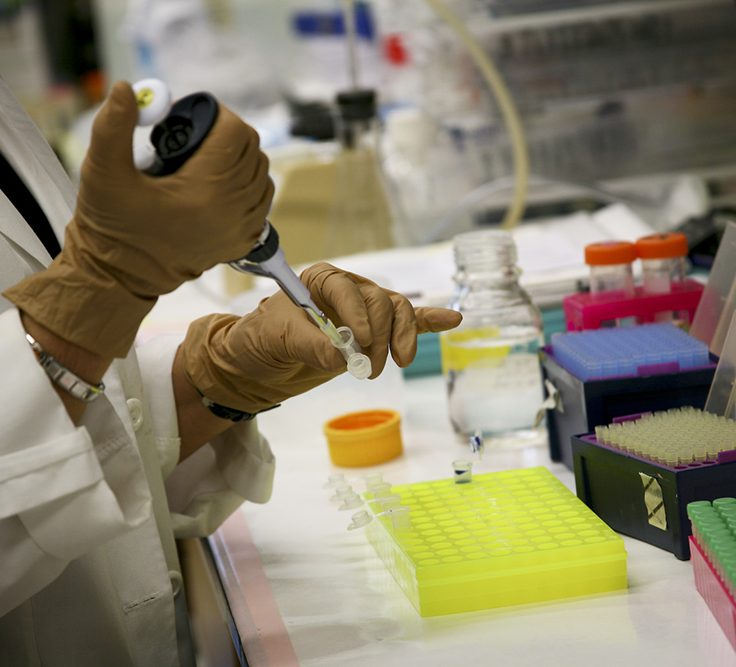
Concept by asauriet/Adobe Stock.
High COVID-19 Viral Exposure May Reduce Protection Provided by Vaccination and Prior Infection
New research led by the University of Florida, Yale University, and the Connecticut Department of Correction reveals that intense COVID-19 viral exposure may diminish the shielding effects of vaccination and previous infection, resulting in “leaky” protection.
The study, published in Nature Communications, expands our knowledge of how COVID-19 immunity works. The findings suggest that measures like wearing masks, enhancing ventilation, and maintaining social distancing, can improve the effectiveness of vaccines by reducing the intensity of exposure.
“Vaccines should be viewed as one component of a layered strategy to reduce the risk of SARS-CoV-2 infections,” said the study’s co-senior author, Derek Cummings. “Our research suggests that vaccines will work better if you pair them with other strategies to reduce your exposure to SARS-CoV-2.” Cummings, a biology professor and Associate Director for Education and Graduate Programs at UF’s Emerging Pathogens Institute, is actively involved in theoretical and on-the-ground disease transmission investigations.
Conducted within the Connecticut Department of Correction system, the study aimed to gauge whether the immunity acquired through vaccination or prior infection weakens in scenarios with higher viral exposure. The population provided ideal conditions for analysis, with comprehensive data on each resident’s specific exposure, vaccination status, and medical background available.
“This research is the first study, as far as we are aware, that provides real-world evidence for the exposure-dependent or ‘leaky’ nature of the immunity afforded by vaccination and infection,” said Margaret Lind, lead author of the paper and an associate research scientist at Yale School of Public Health.

According to Cummings, there has been very little work on how exposure intensity affects vaccine efficacy. “This is in large part due to the difficulty in characterizing the exposure that led to individuals getting infected with SARS-CoV-2,” Cummings said. “Our work with the Department of Corrections provided us a fairly unique opportunity to characterize people’s exposure.”
The team meticulously monitored conditions within the correctional facilities, observing a total of 15,444 individuals between June 2021 and May 2022 — a period marked by two successive COVID-19 waves fueled by Delta and Omicron variants. The investigators assessed whether individuals experienced heightened viral exposure by residing with cellmates who tested positive for COVID-19.
In the Delta wave, vaccination was found to be 68% effective at preventing infection for those without recorded exposure but only 26% effective for cellmate-exposed individuals. For individuals with no prior exposure, previous infection was 79% effective, dropping to 41% with infected cellmates. Hybrid immunity had the best protection: 95% and 71% efficacy, respectively.
When residents lived with infected cellmates during Delta and Omicron waves, immunity weakened. Vaccination worked for 43% with no exposure, but just 4% with infected cellmates. Hybrid immunity was 20% effective for those with exposure and 76% for those without, highlighting the importance of vaccination, prior infection, and hybrid immunity.
“The study and the work of the Connecticut Department of Corrections highlights the risk of respiratory infection that incarcerated people experience and society’s responsibility to reduce this risk,” said Cummings.
Additional research is needed to understand if “leaky” protection occurs in other settings and events. “Our research suggests that vaccines may be of reduced efficacy during periods when community-wide incidence is high and people may be exposed to several people who are infected at once or sequentially,” Cummings said. Future research could investigate this theory further.
Co-authors of the study at UF included Matt Hitchings, assistant professor in the Department of Biostatistics, in addition to Cummings. Co-authors also included researchers from Yale University, Stanford University and the Connecticut Department of Corrections.
Read more about the study here.


